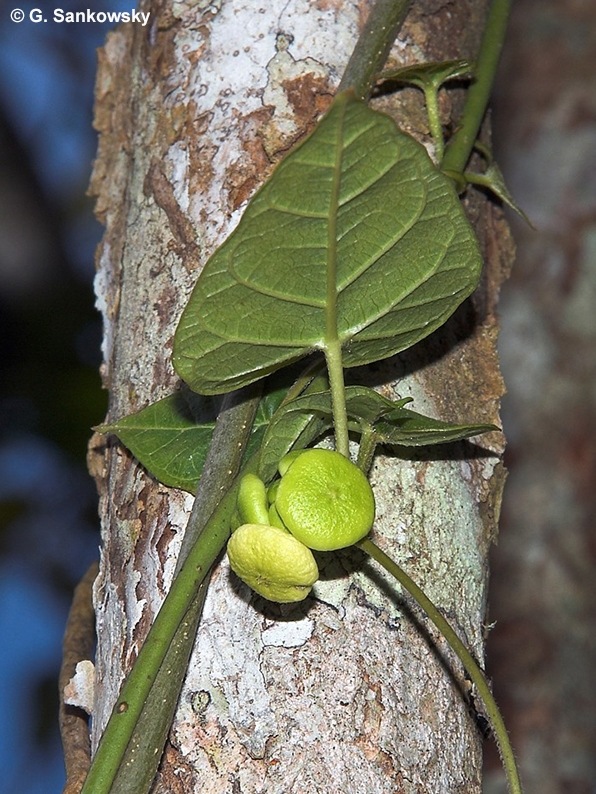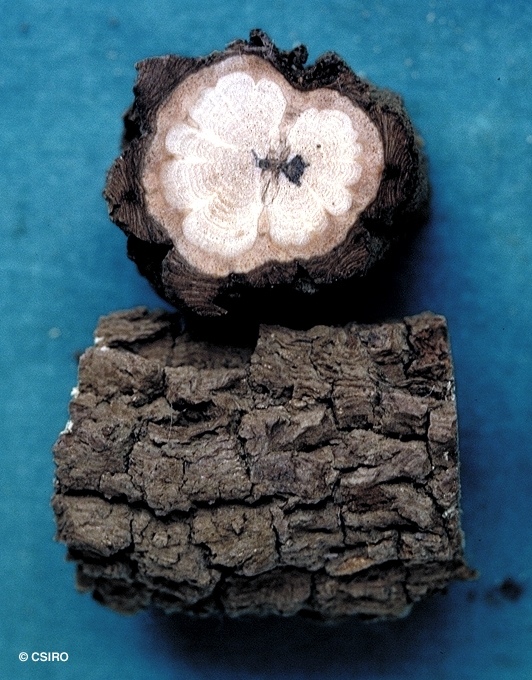Australian Tropical Rainforest Plants - Online edition
Gunnessia pepo P.I.Forst.



Forster, P.I. (1990) Austrobaileya 3(2): 282. Type: 1 km S of Cape York, 10 42 S, 142 32 E, 11 February 1986, B.Gray 4268; holo: QRS; iso: BRI.
A slender vine not exceeding a stem diameter of 2 cm.
Twigs laterally compressed. Leaves, twigs and petioles produce a milky exudate. Leaf blades about 5-15 x 2-16 cm, petioles about 1.5-10 cm long, grooved on the upper surface. Lateral veins forming loops inside the blade margin at least towards the apex. Both the upper and lower leaf blades surfaces clothed in short pale-coloured hairs, curved or crisped, often rather sparsely so. A narrow band of hairs usually extending from the point of attachment of each petiole of a leaf pair up the stem to the next pair of leaves. A similar narrow band of hairs usually extends across the stem between the points of attachment of the petioles of each leaf pair. Colleters about 10-15 per leaf.
Inflorescence a very compressed raceme or umbel, much shorter than the leaves and usually shorter than the petioles. Pedicels up to 6 mm long. Sepals (or calyx lobes) about 1-1.5 mm long. Corolla disciform, about 3-4 mm high and 15-17 mm diam. Corolla lobes recurved, about 1 mm long. Stigma immersed in the head containing the anthers. Pollen aggregated in pollinia.
Fruits about 9 x 1.5-2.5 cm, fusiform, apex pointed. Seeds numerous, about 6-7 mm long, plumes about 25-35 mm long. Embryo about 4.5-5 mm long. Cotyledons wider than the radicle. Cotyledons about 3 mm long, radicle about 2 mm long.
Features not available.
Endemic to Queensland, occurs in CYP and NEQ. Altitudinal range from near sea level to 100 m. Grows in vine thicket, monsoon forest and rain forest.





